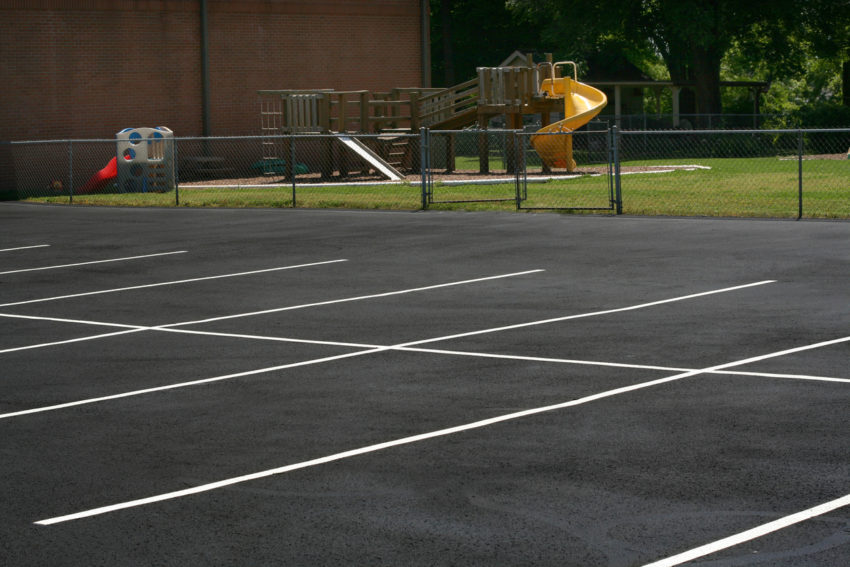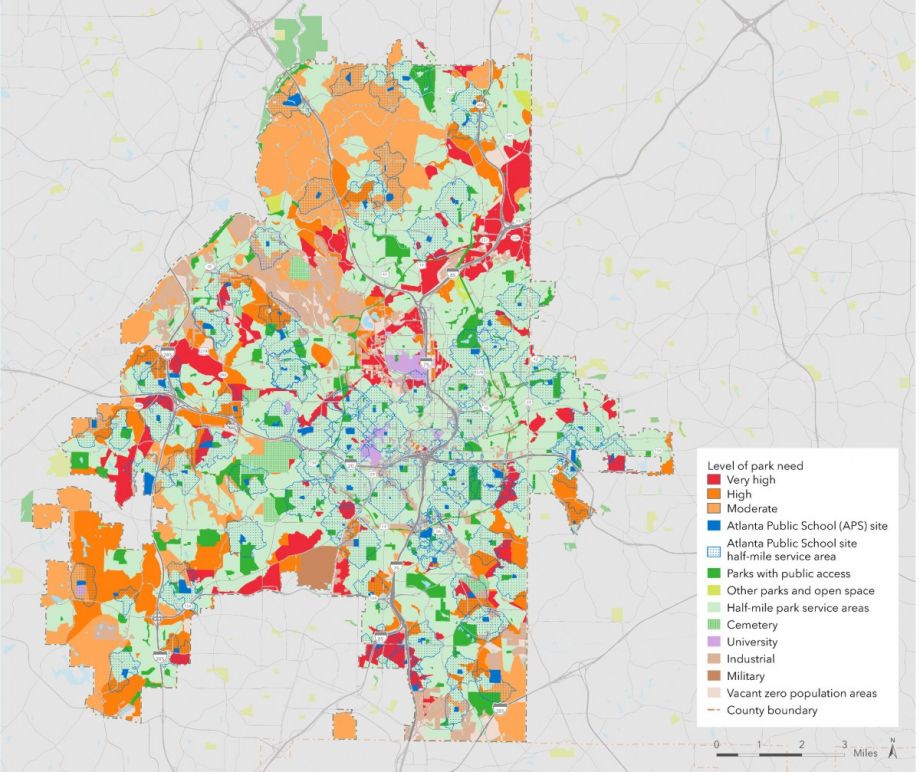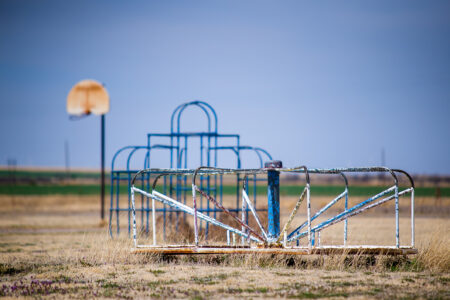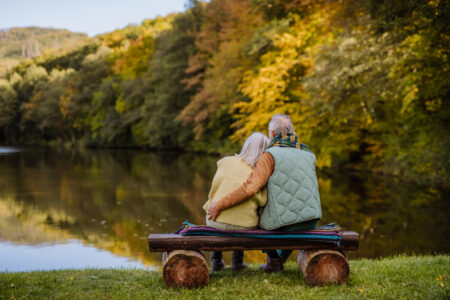
Share On Social!
Children and families in underserved communities have limited to access to green spaces and parks.
However, one of the highest costs for creating a park is land acquisition.
So, the largest land and property owner in Atlanta (4.6% Latino) —Atlanta Public Schools—is launching a new pilot program to open their green spaces to the public outside of operating hours.
Atlanta’s Need for Parks
The Trust for Public Land, a national nonprofit, ranks the largest 100 cities in the U.S. by how well those municipalities are meeting the public need for parks.
Atlanta ranks 43rd on that list.
Only two-thirds of the population live within a ten-minute walk of a public park. In Minneapolis and Minnesota, however, 97% of the population can reach a park in a ten-minute walk.
Fewer Latinos than whites say their neighborhood has safe play spaces for kids, according to a Salud America! Research Review.
Opening existing facilities to the public after school, on weekends, and during the summer is a low-cost way to boost access to parks. This can provide children safe places to play, which is good for health and social cohesion.

“It just doesn’t make sense — as we continue to get denser and the demand for green space increases — for land that is held by the public not to be available for more than one use,” George Dusenbury, Georgia state director at the Trust for Public Land, told NextCity.
That’s why Atlanta Public Schools is working with the Trust for Public Land, Park Pride, the City of Atlanta, and the Urban Land Institute Atlanta to open schools as neighborhood green spaces — starting in disadvantaged areas.
Equity Considerations
In order to locate schools that would have the greatest effect on green space accessibility, Atlanta Public Schools and partners:
- Mapped out the areas that had a school, but not a park, within a 10-minute walk radius
- Ranked the schools with the highest lack-of-park numbers, particularly in lower-income neighborhoods
“Everything we do, we look through an equity lens,” said Rachel Sprechner, executive director of partnerships and development for Atlanta Public Schools. “We like to offer opportunities to all our [schools], but we do have a special lens about maybe the schools in areas that need more resources that don’t usually have the opportunity to seize them.”
They invited 17 schools to participate in the pilot program and committed to providing funding for schoolyard upgrades as well as holding meetings with surrounding communities to obtain input.
Of the 17 schools invited, 10 accepted.
ParkPride will select three initial schools with the goal of opening parks to the public in fall 2020. The remaining schools will open their schoolyards within the next three years.
The Trust for Public Land has committed $150,000 to enhance schoolyards and partners are hoping to raise additional funds.
“If we can green schoolyards across the city, then we are democratizing access to greenspace,” Sharon Danks, founder and CEO of Green Schoolyards America, told NextCity.
In addition to enhancing and opening schoolyards, it is important to ensure families have safe routes to walk or bike to these spaces. Conversations about schoolyard improvements should also address barriers to walking and biking to parks, such as speeding cars and stray dogs.
Share this with school leaders and parents in your community to push schools to open their grounds after hours.
See how Philadelphia and Chicago are improving and opening their schoolyards.
Take the conversation to the next level and green your schoolyard.
Explore More:
Green & Active SpacesBy The Numbers
33
percent
of Latinos live within walking distance (<1 mile) of a park



